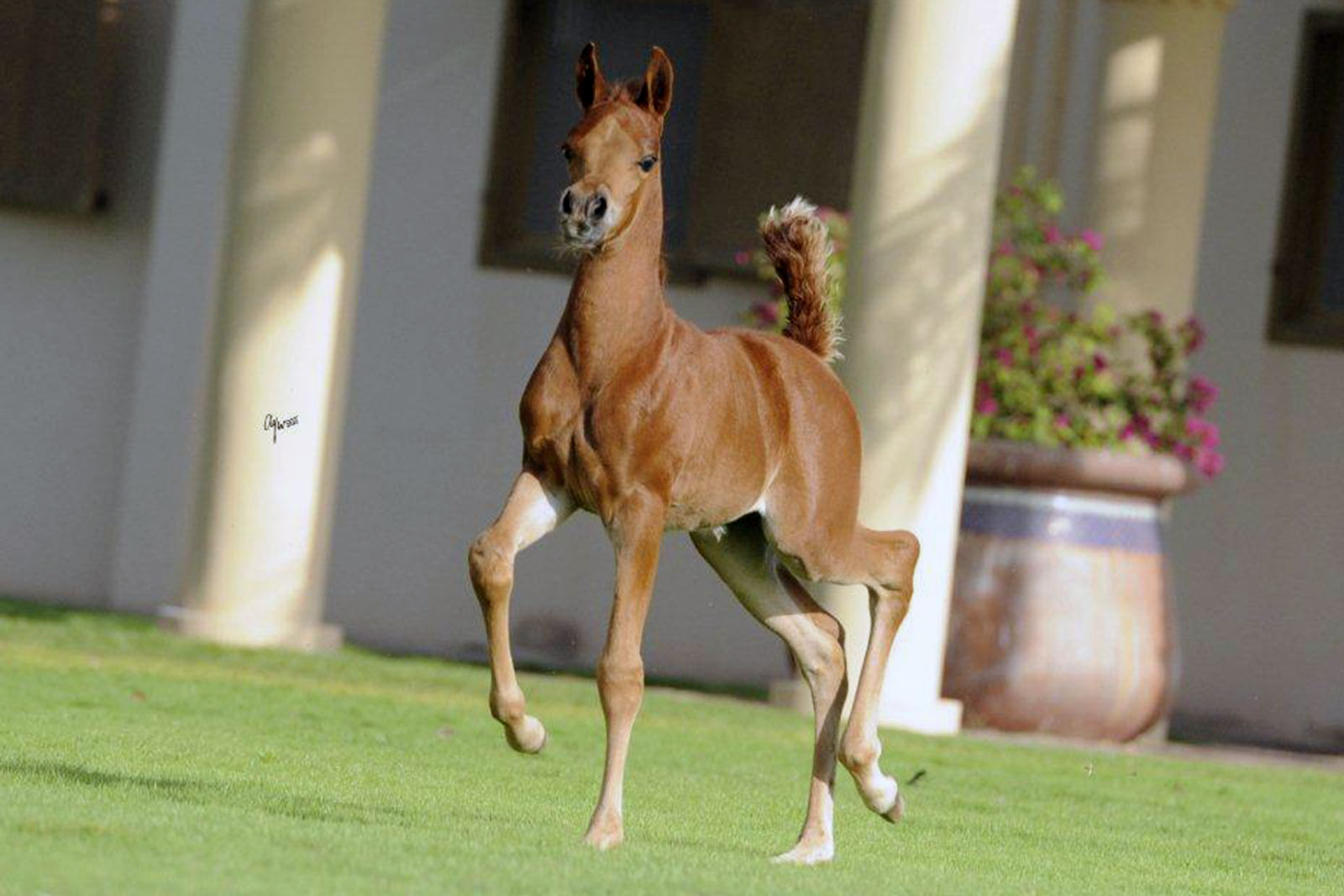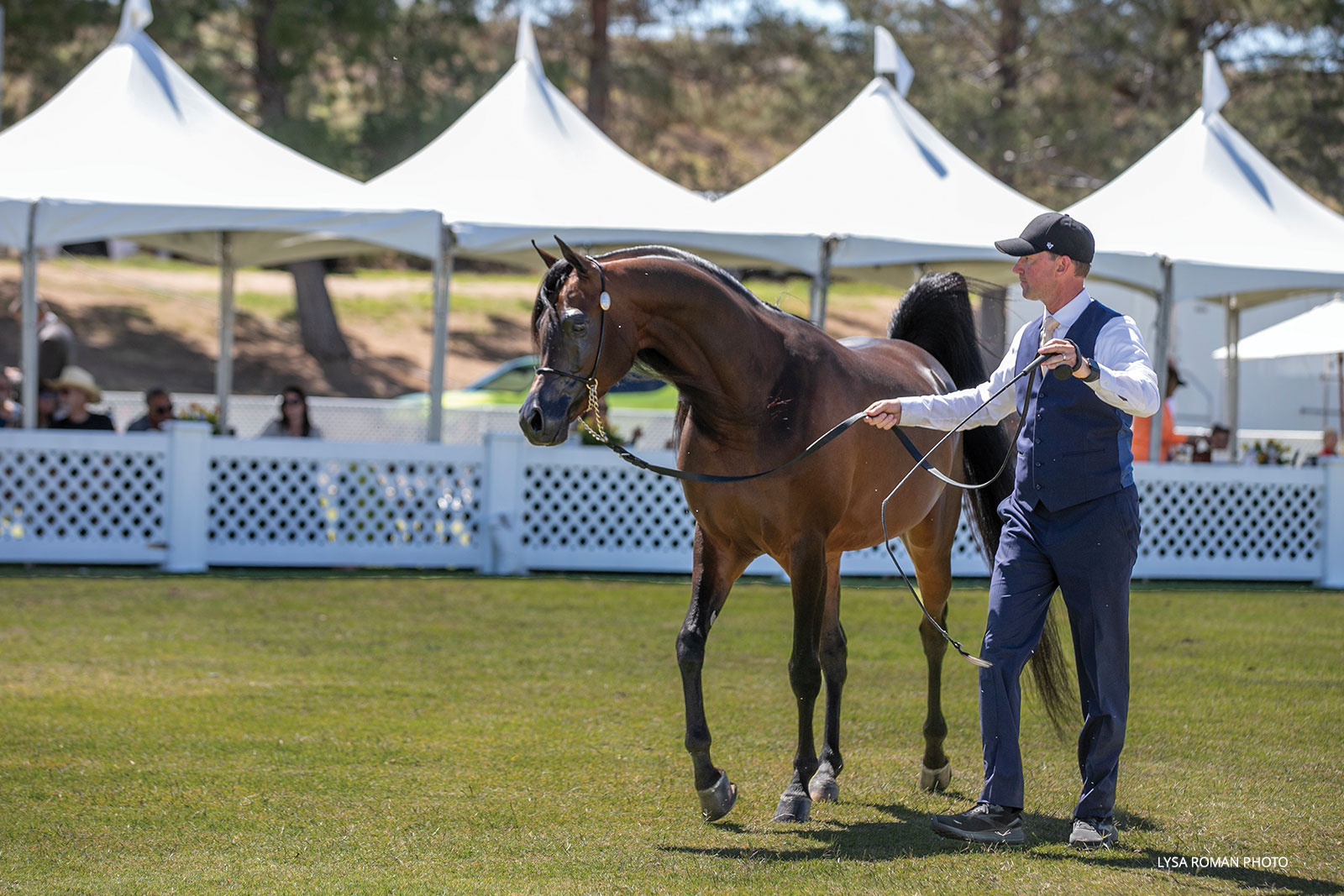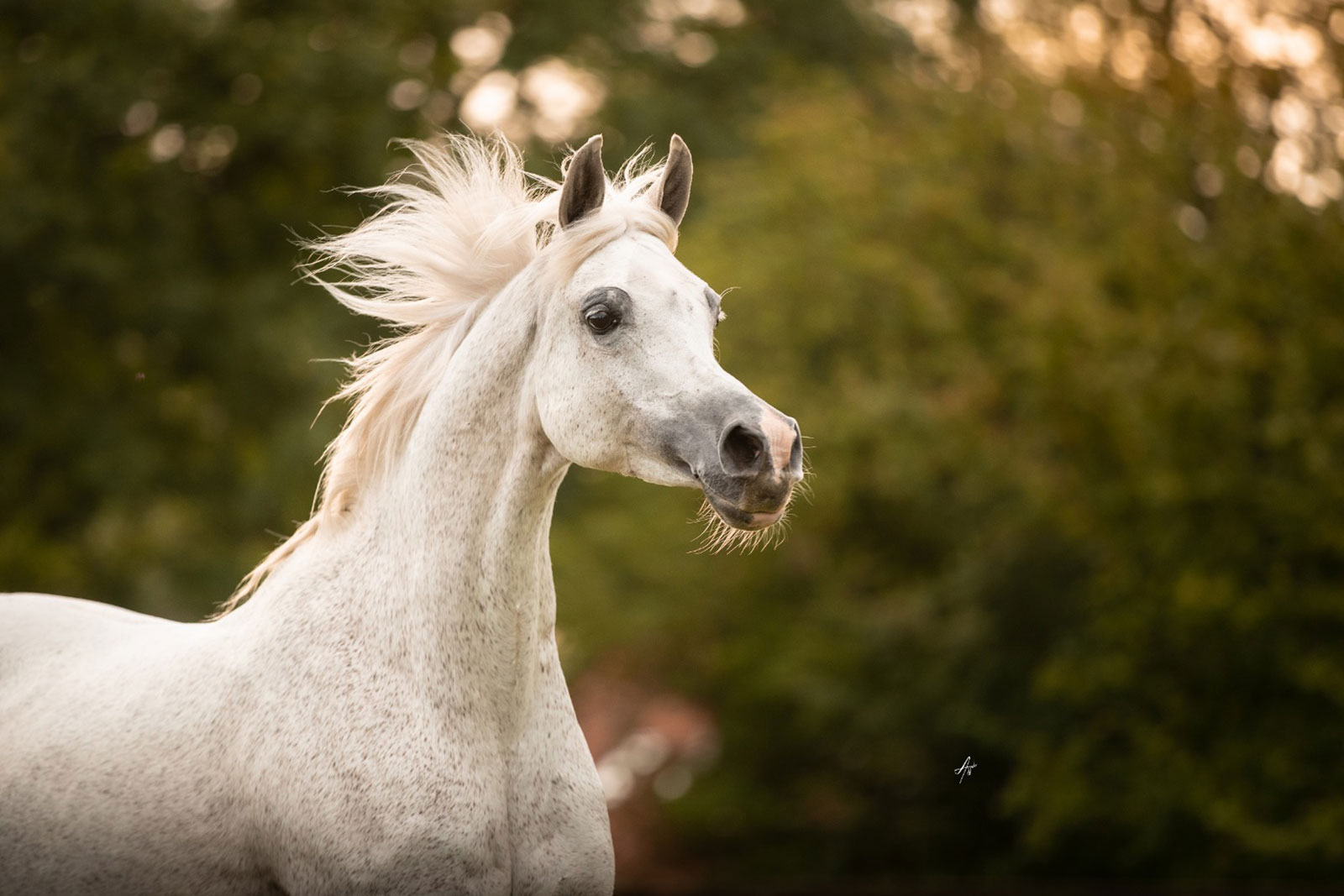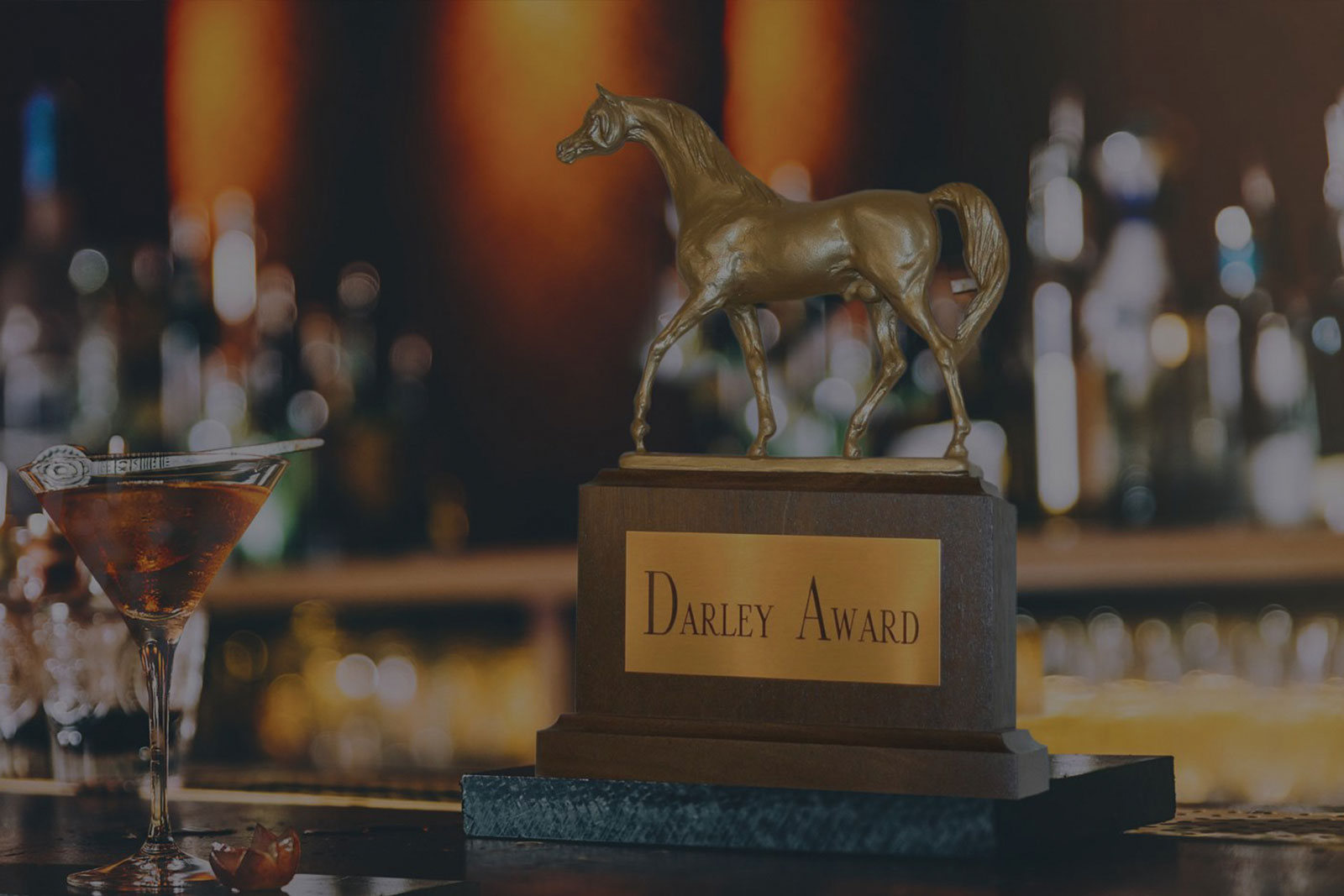By Cindy Reich
This column appeared in the July 2016 issue of Arabian Horse World.
I was having a conversation with a prominent breeder months ago, and she brought up a good question. “Why do we have to keep January 1 as the universal birth date for horses?”
In 1851, the Jockey Club in Great Britain established January 1 as the “universal” birth date for all Thoroughbreds. “I’m going to blame a man for this,” Barbara Murphy, an equine science professor at the University College Dublin, says of the universal racehorse birthday, “because it was someone who didn’t understand the breeding cycle of female horses.” The American Jockey Club followed suit and other registered horse breeds just fell into line, as it simplified categorizing horses by age for competitions, whether it was for racing or showing. This may have made it easier for race secretaries, but horses — and horse breeding — have suffered ever since. I should also note that in the Southern Hemisphere, the universal birth date for horses is August 1.
In the natural world, horses are seasonal breeders. Their reproductive systems respond to the amount of light in a day. Not to heat or cold or any other aspect of the season. Strictly light. The pineal gland in the brain is stimulated by long periods of light followed by short intervals of dark and signals the reproductive system to start gearing up. This is not an arbitrary biological function. As the days get longer, the season is progressing from winter to summer. As grazers, horses are dependent on the grass and forage for survival. Obviously there is an increase in the amount of grass going into spring and summer. Foals born at this time are more likely to survive for several reasons. There is more feed available for the mares who have increased nutritional requirements in late pregnancy and throughout lactation. The weather is less harsh, so the foal has a better chance of surviving. By the time winter comes, the foal is old enough to survive into the next spring. Without outside manipulation, mares are most fertile right around the summer equinox (June 21), more than at any other time of the year.
With January 1 as the universal birth date for horses, the earlier a horse is born after the fi rst of January, the more accurate its chronological age is to its “universal” age, and the more competitive it will be as a racehorse. A foal born July fi rst is considered for registration and racing purposes to be a year old the following January, even though it is developmentally only six months old. Therefore it is at a distinct disadvantage on the racetrack or in any form of competition.
Because of this decision, the breeding of horses became a game of manipulating a mare’s reproductive cycle in order to get her pregnant in mid-February. Since a mare’s gestation is roughly 330-345 days, a mare needs to be bred in February to ensure that the foal is born after January 1st. Foals born on December 31st are legally considered a year old the next day. In the Northern Hemisphere, most mares, if managed in a natural environment, are not having normal reproductive cycles at that time. Although they may be showing signs of estrus, their cycles are usually erratic. The reason for this is that the reproductive system goes through a “ramping up” period in late winter to early spring. “Waves” of follicles form in the mare’s ovaries that usually do not result in a dominant or ovulatory follicle. These waves are stimulated by hormones that have to go through several cycles before the levels of estrogen, follicle stimulating hormone (FSH) and luteinizing hormone (LH) are in high enough concentrations and synchronized to promote the growth of a follicle that is fully mature and ovulates. Remember, all of this activity is stimulated as a result of long hours of light followed by short periods of dark.
So as the short days of winter start to lengthen into spring, the reproductive system starts to respond. However, in February, what normally happens is that the mare has a lot of small follicles, long, erratic estrous cycles and no large mature follicles that are ready to ovulate.
In 1947, Cambridge University researcher found that putting mares under artificial light for the same number of hours as daylight in summer caused them to respond as if it were summer, reproductively speaking. Thus began the now common practice of putting mares “under lights” in early December. This “tricks” the mare’s reproductive cycle to respond in February and March as it would in June and July. The mare goes through the follicular waves and the
“transitional” estrous cycles in December and January and early February, so that by mid to late February, she is developing mature ovulatory follicles. However, there are side effects. Mares that usually would be outside in pastures or paddocks must now be kept in stalls at increased cost in order to be exposed to a lighting program. Some farms (depending on climate) put mares into large outdoor paddocks illuminated with pole lights. However, the mares must be kept in a small area where the light can penetrate all corners. Keeping large numbers of mares in a small area increases the risk of illness or injury. There is even a company now that makes a sort of fly mask that has a small blue light in a cup over one eye. This light stays on for 16 hours per day, the same number of hours of light a mare is exposed to in a lighted stall situation. This allows the mare to live outside yet still be exposed to light. However, how practical the device is for large numbers of mares remains to be seen.
Another side effect of trying to get mares pregnant in February is the amount of hormonal manipulation that takes place. In order to advance the breeding season, the mare is given hormones to “push” her reproductive cycle. She is given prostaglandin to bring her into estrus. When she actually does develop a mature follicle, she is given gonadotropin releasing hormone (GnRH) to cause her follicle stimulating hormone (FSH) to increase and then the luteninizing hormone (LH) to cause the follicle to ovulate. Cycle after cycle, these hormones are manipulated in order to force the mare’s reproductive cycle to respond months earlier than it would naturally.
Now let’s assume that you have successfully, artificially manipulated the mare’s reproductive cycle to get her pregnant for a January or February foal. This is where the real harm comes, in my opinion. In nature, foals are born in summer, when there is abundant food for the mare and the weather is less hazardous. Now, in our artificial “nature” the foal is born in January or February, when the weather is (in most parts of the Northern Hemisphere) cold and nasty. Foals that are born at this time of the year usually have to spend far more time in a stall, so they will spend less time outside growing and developing and more time inside. Air circulation in stalls and barns is limited so the foals are much more prone to respiratory infections. Diarrhea and other health problems also often occur due to overcrowding in shelters or barns. This means more cost in terms of veterinary care and antibiotics as well as the increased cost of keeping large numbers of foals indoors when they should be living and growing up outside. Contrast that scenario to one in which a mare foals at the end of June, outside in a clean pasture, under mild weather conditions. The foal lives outside, breathing fresh air and running and developing to its greatest potential in a large pasture with other mares and foals. Which do you think is healthiest for the mare and foal?
Let’s just carry this a bit further to the foal that despite all best efforts is not born until May or June. It may be started under saddle and put into training before it is physically (and often mentally) capable in order to compete against the same “age group.”
So why do we do it? Because of a decision made by the British Jockey Club in the 1800s? It is 2016 and we as Arabian horse breeders are not running horses in the Kentucky Derby. Yes, there is Arabian racing, but if the universal birth date for Arabians were changed to April or May 1, for example, it wouldn’t change how the races were run and wouldn’t have an impact on the Thoroughbred race industry.
If May 1 were the universal birth date for Arabians (and ideally all horses) here would be the benefits: mares would spend much less time in barns under lights in winter; they could be allowed to ramp up reproductively without the use of hormonal manipulation; foals would be born outside or at least in weather conditions for the most part that would enable them to spend less time in stalls or barns; the cost in terms of stabling, bedding, electricity, feed, and veterinary care would be greatly reduced; conception rates would likely increase; and stallions would be collected for semen or bred when their semen quality was at its highest and most fertile.
I used to do a lot of breeding with Gypsy Cobs, a favorite breed of mine. These sturdy Cobs have been bred for riding and driving in England and Ireland for several hundred years. Interestingly, these horses were resistant to manipulation of their reproductive cycles for early foals. No matter what you did to try to get an early foal from them, it was usually unsuccessful. Yet if you bred these horses in July or later, they got in foal very quickly with absolutely no manipulation. My personal theory is that they evolved in a northern climate where the winter and spring are very wet, and cold, and conditions for foals to be born are not favorable. Autumn is the driest and mildest time in these countries and that is when the foals were born. So although they could be kept in barns, put under lights, and put under hormone protocols like other breeds, nature dictated their reproductive cycles, and refused to yield to modern methods.
Our horses have been bred for so many generations in managed and artificial conditions that they have lost the inherent physiological memory that nature designed for them. Wouldn’t it be nice if we allowed them to reproduce more closely to the way they were designed?
Now, I know the chances of this ever happening are slim to none. Certainly, the Thoroughbred industry will never change its universal birth date. It won’t even consider artificial insemination or embryo transfer — which is so ironic. If breeders of Thoroughbreds really wanted horses to be bred in the most natural way possible, they would do it in June and July, not February and March!
However, what is holding back our industry? Could it happen? Could a program be instituted over a number of years, where the date could be changed? We are only held back by our own fears. If we really, truly wanted to do what is best for the horses’ sake, and what makes much more economic sense, this is a topic that should be discussed.
I bring this up as we get close to the universal birth date for the Southern Hemisphere. Perhaps someone might take up the idea and run with it. What are your thoughts? Let’s start a discussion and see where it goes.
Meanwhile, in July, the majority of mares are already pregnant — bred, of course, early in the year. The heat and humidity are taking their toll, with the horses sticking close to shade and keeping each other as free of flies as they can, head to tail. That’s the best they can do in the heat.






